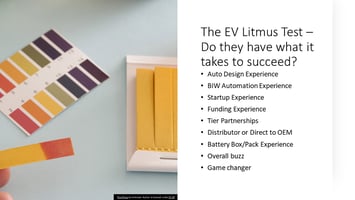The automotive industry has always been one of the most competitive industries out there. For...
EV Mileage Ranges are Misleading, should the industry adjust?

The range is an essential factor when comparing electric and gas vehicles. Gas vehicles can typically travel much further than electric vehicles before needing to refuel, making them a better option for long-distance travel. Electric vehicles are more suitable for shorter trips or use in urban areas, with more charging stations available.
The average fuel efficiency of a gas car in real-world conditions is about 25 miles per gallon. This means that a gas car can travel about 400 miles before refueling. Electric vehicles, by contrast, typically have a range of only about 200 miles before recharging.
The EPA range test is a standardized procedure used to measure the range of an electric vehicle. The test involves consistently driving the car until it runs out of battery power. The total distance covered during the test is then used to calculate the vehicle's range. This is done in an air-conditioned building with no drag or interference on the EV or Gas vehicle.
While most automotive manufacturers post a similar estimated range for their electric vehicles, it's often not the same as their IC or internal combustion engine counterparts. If your range for your small gas SUV is 300 miles, then you should be able to drive from Houston to San Antonio at any speed, any time of day, and any month with enough gas left over to drive around on your first day.
 Having owned both a used Model S and a 21' Model Y, the estimated range doesn't reflect actual highway speeds first and foremost. The optimal rate for the battery to maintain that range is under 70 M.P.H. If you drive 85 mph (the speed limit in Texas) or faster in California or the Autobahn, your range will drop significantly during your trip.
Having owned both a used Model S and a 21' Model Y, the estimated range doesn't reflect actual highway speeds first and foremost. The optimal rate for the battery to maintain that range is under 70 M.P.H. If you drive 85 mph (the speed limit in Texas) or faster in California or the Autobahn, your range will drop significantly during your trip.


If you double down on your high speed with extreme temperatures, be it a Texas Summer or a Nordic Ski Trip, your range drops even further. I've made the trip from Cali to Texas several times when we lived in San Jose, and a ten-hour trip in a gas car is 14 hours at least with charging stops. I drove our Y from Houston to Dallas (240 miles), and with a full battery or 300-mile range, I averaged 140 miles per charge, driving 90 mph and 105F outside. While I understand that both affect the battery drastically, I wonder if the EPA should be more realistic, given that a gas car would have made it off the same range with no issues. What are your thoughts?


